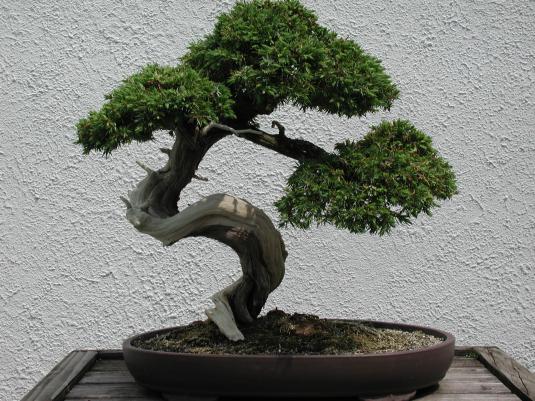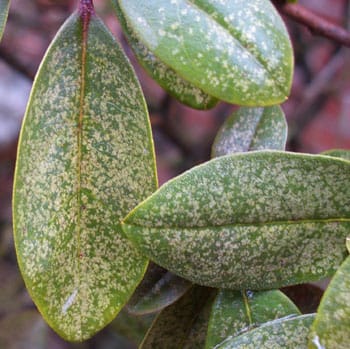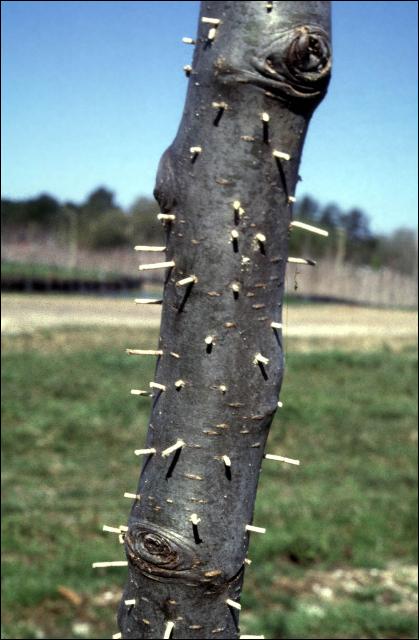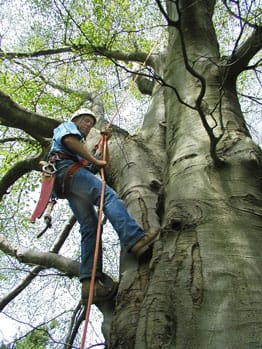Source(s): Stephen D Pettis
The art of bonsai is very old indeed. The first people recorded to practice the art were the Chinese who, in the 14th century, collected naturally dwarfed plants from the wild and transplanted them into containers.
These ancient gardeners appreciated the wild, contorted beauty of the plants that were stunted by the harsh extremes of altitude and poor soil. They brought this beauty into their homes and gardens through ingenuity, cleverness, and an understanding of plant physiology.
The word bonsai literally means ‘plant in a tray’. The concept is simple; restrict the growth of a plant’s roots and shoots, allowing the trunk to grow. The end result is a plant that appears to be a miniature representation of its relatives in the wild.
The actual mechanics of bonsai are simple enough that anyone could become an enthusiast. The skill that most of us are lacking is the patience that is needed to allow a plant to properly develop. Bonsai trees can take years to develop. There are many trees in existence today that are over one hundred years old. In nature, trees grow relatively slowly and even slower when cultivated as a bonsai. Achieving a dwarf plant that is a true mimic of a tree in nature in one of the specific styles is the art of bonsai.
There are many styles of bonsai. The simplest would be the formal upright or erect style. The trunk is encouraged to grow straight and the tree is usually pruned into a symmetrical form. Another simple design is the informal upright. The tree is trained vertically but is not forced to grow straight. Other upright designs include the double trunk and the leaning.
There are more challenging designs for advanced gardeners. Using a trailing groundcover shrub, the cascade design allows the plant to hang over the edge of the pot and grow toward the ground. Other very interesting styles are the roots-over-rock style where the tree is planted so that it grows over stone and the windswept design where the plant is pruned to make it appear as though it is growing in the desert.
Things You’ll Need for A Simple bonsai: Grow or purchase a tree seedling or rooted cutting such as Red Maple, Japanese Maple, Chinese Elm, River Birch, Chinese Zelkova, Pine or Juniper in a 4 inch container. Obtain a shallow container, well-drained soil, very small BB sized gravel, and copper wire. Tools needed include small pruners, a trowel, a clean spray bottle with water, a pan of water, and a small paintbrush.
Planting: Remove the plant from its original pot. Using your hands, dislodge all the soil from the roots of the plant until the roots are bare. Using the paintbrush, finish cleaning the roots. Dip the roots in clean water and gently the wash them. Keep the roots moist throughout the planting process by misting with a spray bottle.
Using the pruners, lightly trim the roots and the shoots or branches. Trees need to maintain a specific ratio of roots to shoots. Prune the roots and the shoots to balance the ratio to 1:1. If you plan to train your tree, install the copper wire now. Wrap the end of the wire around the crown or the tree (the area where the roots meets the trunk) and gently coil the wire around the trunk until you reach the top. Cut off the extra wire at the top of the plant and wrap the wire loosely to the end to the central branch. Now the trunk may be bent to the form you wish your bonsai plant to take. The same may be done with the branches by attaching wire to the main trunk and wrapping the branches with wire.
Planting the tree correctly is important. In a shady spot, begin by lining the bottom of the tray with one-half inch of gravel and a layer of soil. Spread the roots over the soil layer so that the roots are extending in all directions. Cover the roots with soil being careful not to cover the crown of the tree with soil. After you firmly press the soil with your fingers, the soil level should be one-half inch from the top of the tray. Sprinkle a thin layer of gravel on top of the soil and arrange any stones, moss, or other decorations on the surface. Fertilize with a balanced tree fertilizer. Remember, bonsai are not houseplants. Most bonsai trees need plenty of sun so place the tree in a partly sunny to sunny outdoor location.
After Planting Care: The new bonsai plant may need periodic pruning or pinching. Prune or pinch back any errant branches to keep the plant in its proper form. Remove leaves to reduce the demand on the roots for water and nutrients. Pinch new shoots and the buds from old shoots to keep the amount of new growth to a minimum.
Bonsai trees need regular care. Due to the restricted roots and relatively small amount of soil, the plants can dry out rapidly. Daily, irrigate the tree thoroughly. On very hot days, the plant may need water twice a day if it is in full sun. Fertilize with a diluted liquid fertilizer every couple of weeks.
Replanting: Bonsai trees are generally repotted every two or three years in the late winter or early spring. Re-use the old pot or use a slightly larger new pot. Repeat the root cleaning process discussed during planting so the roots are washed thoroughly. While keeping the roots moist, prune the roots and the shoots to maintain an even balance between the two. Adjust the copper wire to prevent it from becoming too tight as the tree trunk grows. Re-pot in the same manner as before except now it may be necessary to wire the roots to prevent your growing tree from toppling out of the pot. Run copper wire through the drain holes in the bottom of the tray. Fasten these over the roots. Again, finish re-potting by sprinkling gravel over the soil surface and fertilizing. To learn more about bonsai, contact the your County Extension Service.
Center Publication Number: 104



